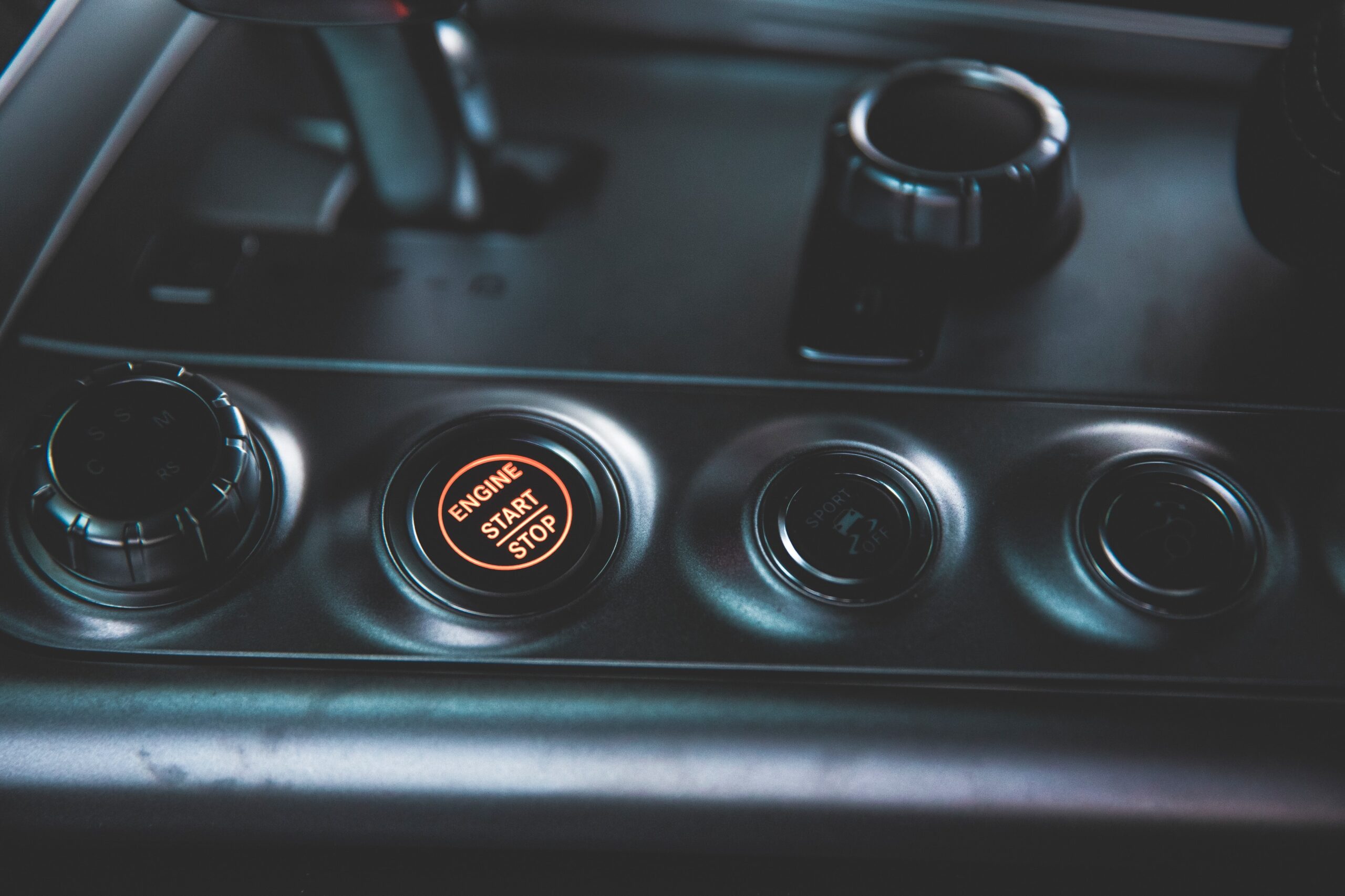How Do You Push Start a Car?
In more modern cars and cars with keyless ignitions, push starting a car is just the push of a button, but in cars with a manual transmission push starting a car takes on a different meaning.
Most days, you get in the car to go somewhere, and the car starts quickly with the turn of the key. It can be overwhelming and disheartening when you get in the car, and that doesn’t happen. We rely on our vehicles so much to take us to school, work, and just about anywhere we want to go.
While it shouldn’t be your first solution when your car doesn’t start, it’s nice to know that there’s a process like push starting your vehicle that can get it going again.
Push starting can also be referred to as clutch starting or bump starting a manual transmission vehicle. In other areas, it’s even called crash starting or popping the clutch.
If you’re unsure what kind of transmission your vehicle has, you probably have an automatic. A manual transmission has an extra pedal called the clutch, and it requires learning additional skills to operate.
Some people prefer manual transmission vehicles, and they do tend to get better gas mileage. Because of their uniqueness compared to an automatic, it is unlikely that you would have a manual transmission vehicle and not know it.
If you have a manual and your engine won’t start, when should you push start your car, and how do you push start your vehicle?
When Should You Consider Push Starting?
Before you jump to push starting your vehicle, you’ll want to exhaust other options first.
Try Again
When turning the key to start your engine doesn’t work, the first thing you should do is try again. However, you don’t want to try to start your engine too many times, or it can flood the engine. A flooded engine means that there is too much fuel and not enough oxygen to create internal combustion.
Trying to start your engine can also burn out your starter. Given that it’s called a starter, that’s not going to be a good thing. So, you do want to try to start your engine again if it doesn’t work the first time, but keep your attempts limited.
Check Your Connection
After you’ve attempted to start your vehicle the traditional way, turn off your car completely. At this point, you’ll want to check your car battery terminals to be sure that the cables are secure. A gentle wiggle can tell you if you have loose wires. If your lines are secure, it may be time to seek help.
Jump Start
If you have help from another driver with another vehicle present or a jump box, you can try jump-starting your vehicle. Jump starting your car is also called a boost. It is the process of starting a vehicle that has a battery that has been depleted or lost its charge.
Jumper cables are used to connect the battery to an external power source like another vehicle or a jump box to give the battery a boost or jump in power. This boost can be enough to help your engine start.
This process can be dangerous. Be sure that you and your help know what you are doing and do not rush, or it may be best not to attempt it.
If you have an automatic and you’re in your personal vehicle, this is the point at which you would reach out to a local mechanic, make your apologies if you had somewhere to go, and make other travel arrangements.
If you have an automatic and you’re in a rental car, you’ll want to reach out to your car rental company for the best way to proceed.
Push Start
Warning: Push starting a vehicle should only be done when you have someone else who can help you. You should never attempt it alone. Attempting to push start a vehicle alone is dangerous, and it could lead to injury or result in a fatality. Remember, its other nickname is crash starting, and that shouldn’t be taken lightly.
You can attempt to push-start your vehicle on an incline or with several people assisting by pushing the car. Once you know how you will attempt to push start, the steps are the same.
- Step 1: Turn the key for the ignition. This ensures that the engine will get fuel when it tries to turn over.
- Step 2: Release the parking brake. The parking brake will prevent the car from rolling down the incline or while the people pushing your vehicle are trying to push it forward. Be sure you place your foot on the brake before you release the parking brake to make sure you can move through the remaining steps safely.
- Step 3: Move your gear stick into the second gear. This will make the step of releasing your clutch later smoother.
- Step 4: Push the clutch in. Keeping your foot on the brake is paramount when you release your clutch because it is the only thing holding your car in place until you’re ready to push start.
- Step 5: Step off the brake. If you are on an incline, your car will begin to roll downhill at this point. If you are getting a push, your helpers will want to start pushing at this point. Communicate with your helpers to let them know when you’re ready.
- Step 6: Release your clutch. As your car begins to roll and gains speed, slowly release your clutch.
What Else Can You Do?
At this point, you should feel the engine begin to rev to life. Now, you can press your clutch in and drive your car as you normally would. If your car needs to be serviced, it’s recommended that you take it in after you get your car running so you won’t have to repeat this process.
There can be many issues that make your engine not start when you turn the key. Some of those possible issues include:
- A blown ignition fuse
- A dead battery
- A bad starter
- A bad battery
- A failed ignition switch
Whatever the reason, your vehicle will likely need to be serviced. Some of the possible issues may not take very long to fix and can be done by you or a trusted person you know that can help. Other issues may need a mechanic and several days or weeks to repair.
If you find yourself without a vehicle for an extended period of time, you may want to consider a car rental to help you in the meantime. Borrowing someone’s car is a big responsibility, and it can be uncomfortable to make such a request.
A car rental can get you back on the road with the same confidence you have when it’s your own personal vehicle, and you can request a rental for a longer period. You can also return it when your vehicle is repaired.
Summary
Getting in your car to go somewhere only to have the engine not start for you is distressing. There are solutions, especially if you have a manual transmission, but you should always use extreme caution when attempting to start a vehicle and never attempt it alone.
Sometimes it’s best to leave repairs to the professionals and seek out transportation while you wait on your car to be repaired. A car rental may be just the solution you need until your vehicle is on the road again.
Sources:
Drivers | FMCSA
Manual transmission enhances attention and driving performance of ADHD adolescent males | pubmed.ncbi.nlm.nih.gov
Best Jump Starter Buying Guide | consumerreports.org




